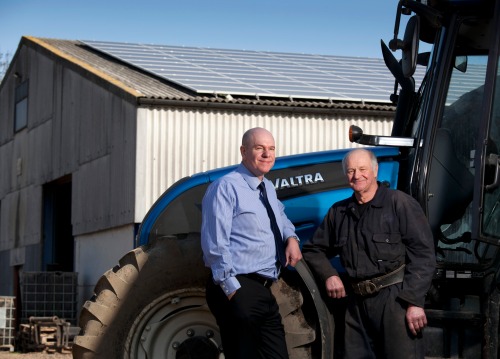When I started Eco2Solar in 2007 it was clear where the growth area was in the market. Fuelled by rising energy prices, increased awareness of climate change and fuel security, as well as new targets such as Code for Sustainable Homes or Merton Rule (10% of energy from renewables) for new build homes, the technology of choice was solar thermal heating; mostly for hot water.
Solar PV was very much a fringe technology; perceived as very expensive with a long payback; even with grants that were available.
The Feed in Tariffs (FIT) changed all that! PV became cost effective, financially attractive and even a bit “sexy”. Prices of systems plummeted to reflect the enhanced competition and economies of scale – and rightly so. A solar PV system can now be installed for around one third of the price you would expect before the FIT’s.
This all but left poor old solar thermal technologies out in the cold (not literally fortunately!)
Solar thermal is still an attractive technology though. It is extremely efficient – around 90% of radiation can be turned to heat. It is also appropriate for many applications in buildings; particularly for heating hot water or swimming pools. Heating water uses 25% of the energy in the average home. Therefore solar thermal should be considered first where it makes sense i.e. heating water.
However, many homeowners and businesses are installing the largest PV system they can fit on their roof and then looking at ways to use the excess electricity to heat water. Whilst it makes sense to utilise as much electricity from a PV system as possible, if you are looking to heat hot water, does it make sense to use a dedicated technology?
I looked at this in the light of current costs and what I discovered was surprising! An average solar thermal system of 3m2 of evacuated tube or 4m2 of flat plate would be specified to heat 180-200 litres of hot water; providing 50 – 70% of hot water. Such a system would cost around £3,750. To produce a similar level of energy from a solar PV system would require approximately 1.5kWp and cost – guess what – about £3,750.
The differences are that a solar PV system will take up around 10m2 of roof space whereas the solar thermal one would take up 3 -4m2. So if roof space is limited then the solar thermal will provide a better solution. On the flip side, solar thermal only produces heat and a PV system produces electricity which can be used for many things. Also you get FIT’s now to install a PV system and you will need to wait for domestic Renewable Heat Incentive (RHI) and we don’t know how much it will be.
To be fair this analysis is a little simplistic in that a solar PV system will need some tweaking and some kit to ensure that it can use the energy cost effectively to heat water.
Also, this only holds for small solar thermal systems; with larger arrays for homes with high hot water use, commercial buildings or swimming pools – the economies of scale mean that the solar thermal heats water much more cost effectively. The high cost of other components such as the cylinder and pipework do not increase in proportion as the system size increases.
And, of course, non-domestic solar thermal systems will be entitled to RHI.
So, it’s up to you whether to install a small solar thermal or PV system. It really depends on roof space available and what you want to do with the energy once you have generated it.
